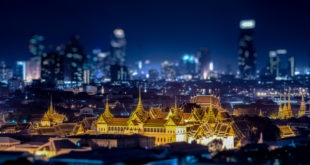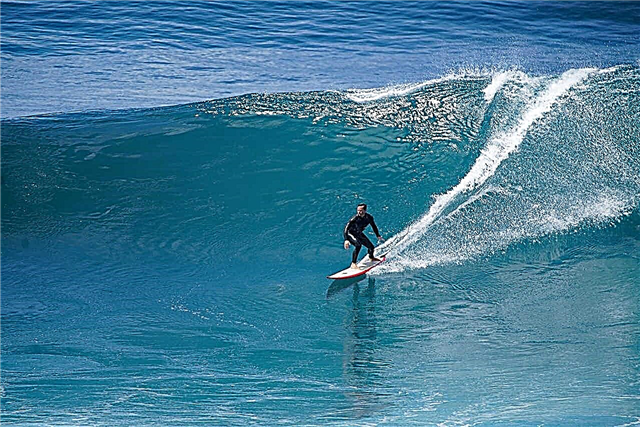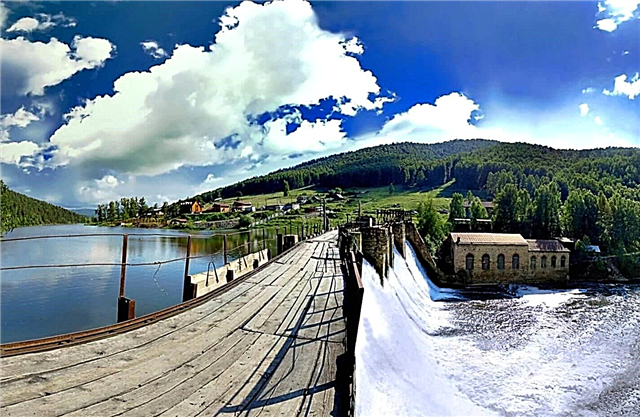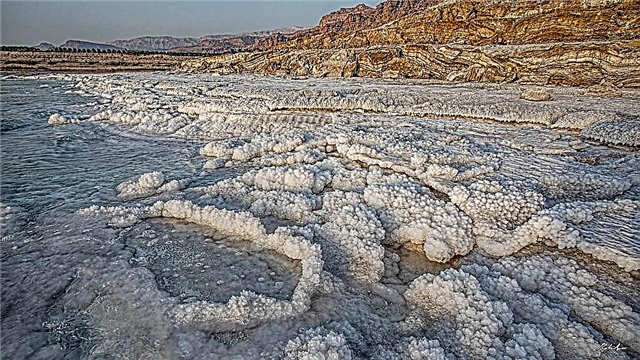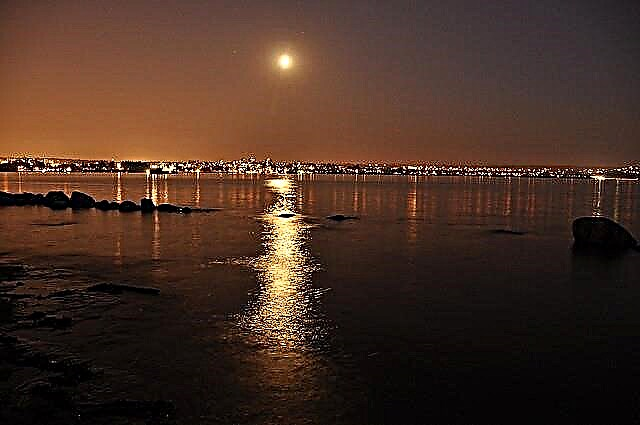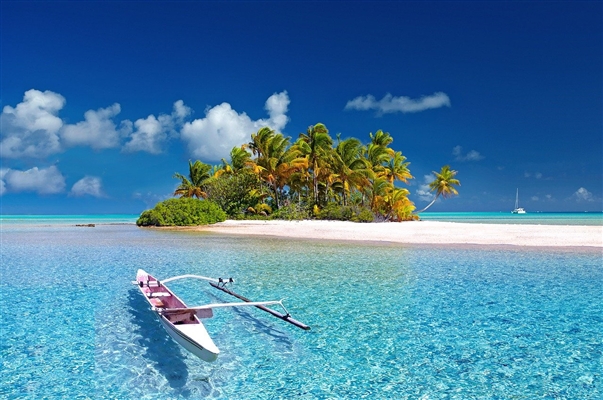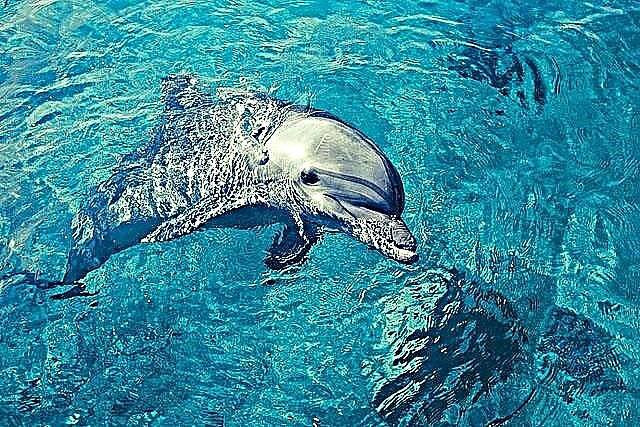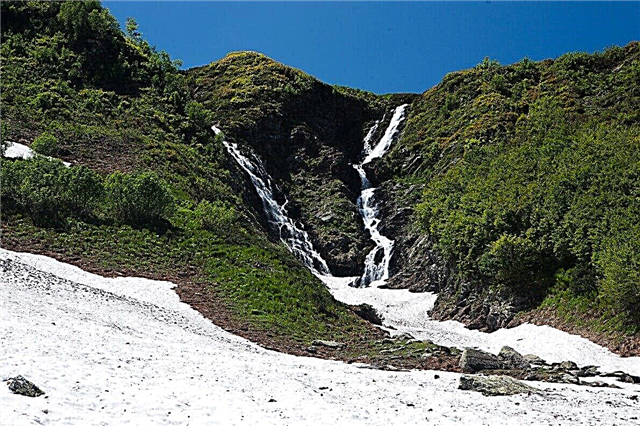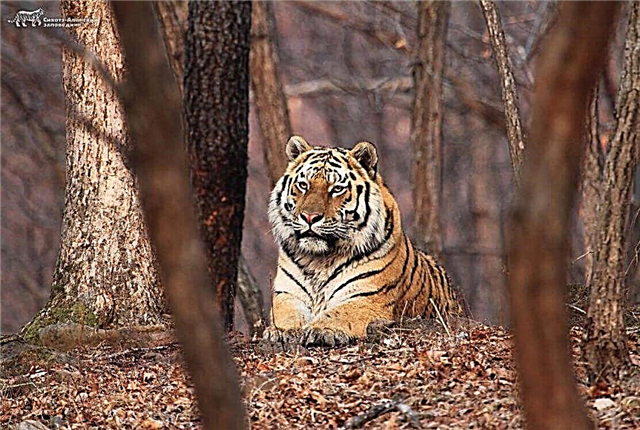Russian reserves are scattered across all regions of the country. They differ from national parks in Russia in the degree of protection of the territory and other rules of conduct within the perimeter. This is done in order to preserve nature in its original state, or to allow the area to recover from the negative impact of man.
The flora and fauna in the reserves are traditionally rich in the number of species. Often, individual specimens have a limited distribution area or are listed as endangered. Some natural areas are not easy to get to, and visiting others is completely forbidden. However, research work and observations of the terrain are carried out on an ongoing basis. More than 30 reserves in Russia are classified as biosphere reserves.
The most famous nature reserves in Russia
Kronotsky
Located in the east of the Kamchatka Peninsula. Founded in 1934, it has an area of over a million hectares, most of it is covered with stone birch. Attractions: the only field with geysers in Eurasia (6 km²), one of the largest in the world with thermal springs, mud bowls, mini-volcanoes and waterfalls; the eponymous active volcano and lake; graceful fir grove.

Altaic
It was formed in 1932 and did not have a permanent protection status. The biosphere reserve is included in the territory named by UNESCO "Golden Mountains of Altai". The area is 881 thousand hectares, which occupies almost 10% of the republic. The boundaries are delineated by mountain ranges. Despite the fact that now a special regime is observed here, missile launches from Baikonur, or rather, the separation of stages significantly affects the pollution of the local environment.

Barguzinsky
The biosphere reserve is named after the sable species that lives here. Location - the Republic of Buryatia, and the total area - 374 thousand hectares. Founded in 1916, this is the oldest reserve in Russia. An ecological tourist route has been laid through the valley of the Shumilikha River, up to Lake Baikal. It allows you to see all the variety of relief: from sand dunes to alpine lakes, as well as a smooth change of vegetation.

Wrangel Island
Belongs to the Chukotka Autonomous Okrug and covers an area of 2225 thousand hectares. It has existed since 1976, when it was reorganized from a reserve and included the territory of the Herald Island. Visits are strictly limited and permission must be obtained. Few lucky people can move around the reserve on all-terrain vehicles or on foot. Sightseeing: a house in Popov's lagoon, an ancient Eskimo camp, Perkatkun mountain.

Pillars
Located near Krasnoyarsk. It received its current status in 1925. The name is largely determined by the relief of the area: rock formations and cliffs reaching a height of one hundred meters appear everywhere on an area of 47 thousand hectares. They are also the main reason for tourists coming here. Most of the pillars have names: "Vulture", "Grandfather", "Feathers". Another significant place is the Shelter of Dr. Aibolit, where animals are nursed.

Far Eastern Marine
It has been part of the Primorsky Territory since 1978. The area is 64 thousand hectares, and almost all of it is the water area of the Peter the Great Bay - the largest in the Sea of Japan. The reserve is divided into three sections: a completely closed one, where research is carried out, and a tourist one with a hotel and a museum. Tourists are attracted by the opportunity to take photos at depth and the opportunity to observe the nesting of birds.

Darwin
Located in the Vologda and Yaroslavl regions. Founded in 1945 and covers an area of more than 112 thousand hectares. The reason for its appearance is the need to understand how the Rybinsk hydroelectric power station and its reservoir influenced the local nature. Bird watchers are attracted by the reserve as a nesting place for hundreds of bird species, especially osprey. There are art objects on the coast of the artificial reservoir. There are also places for camping.

Great Arctic
It was founded in 1993 and covers an area of 4169 thousand hectares, which makes it the largest nature reserve in Russia. Occupies islands, as well as the coast of the Arctic Ocean in Taimyr. Around - the arctic desert with rare mosses and lichens. There are a lot of lemmings, as well as predators that hunt them. There are several types of excursions, they introduce you to local peoples. Rafting on Hutuda-Biga is popular.

Astrakhan
It appeared in 1919 and now occupies 63 thousand hectares of Kamyzyaksky and Volodarsky districts of the same region. The visit to the reserve is accompanied by its staff. They lead groups on water and hiking routes, focusing on rare specimens. It is better to choose certain periods for visits, depending on interests: the time when the lotuses bloom, or when the birds migrate.

Caucasian
Located on the territory of Adygea, Krasnodar Territory and Karachay-Cherkessia. It was declared a nature reserve in 1924. The area is 280 thousand hectares, the relief is mixed, there are many not only mountains, but also caves. Among plants, 20% of species are especially rare. Attractions: a grove with yews, which are hundreds of thousands of years old, as well as the Laura cordon with a large number of open-air cages, where deer, bison and foxes are kept.

Putoransky
Founded in 1988 in Taimyr. Occupies an area of 1,887 thousand hectares. The most valuable and protected species is the bighorn sheep. For the winter, a reindeer comes to the reserve. The vegetation is of different levels: from the forest-tundra to the arctic desert with an abundance of stones. Due to the relief of rocky canyons, dozens of waterfalls have formed. They are located in different parts of the reserve and are very different from each other.
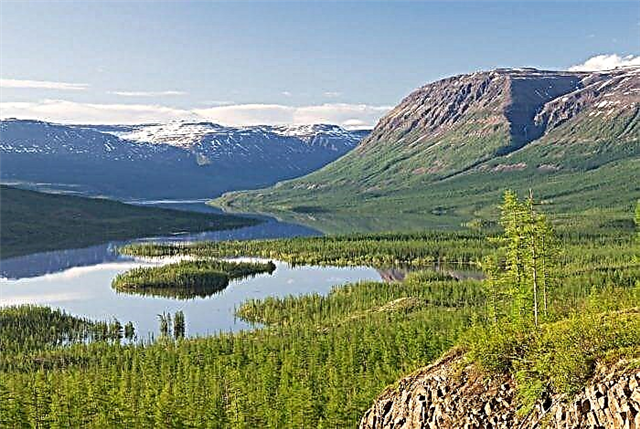
Prioksko-Terrasny
Received its current status in 1945. Located on 5 thousand hectares in the Moscow region. The most remarkable object is the bison nursery. Young animals are raised here not only for themselves, but also for other regions, increasing the population or creating it in some places from scratch. Perhaps a road will soon pass through the territory of the reserve, which will be a disastrous factor for him.

Pechora-Ilychsky
It was created in the Perm Territory in 1930 in order not only to preserve the natural zone, but also to study the history of the region. The area is 721 thousand hectares, which consists of three relief parts, each with its own vegetation. There is a museum divided into two expositions - samples of fauna and a collection of local lore. A water trip along Volosnitsa introduces the local beauties and allows you to walk along the ancient trade route.

Shulgan-Tash
Occupies more than 22 thousand hectares in the Republic of Bashkortostan. In 1986 he separated from the large Bashkir reserve. Natural landmark - Kapova Cave, formed by an underground river. Inside there are three floors with branched passages and halls, ancient drawings on the walls. A wide tourist program, a museum, an information center, horseback riding, a visit to an apiary, an eco-route.

Kivach
It is named after the waterfall and is located in Karelia. It was founded in 1931 on an area of more than 10 thousand hectares, but there is another protected zone around. You can get to the territory as part of excursion groups moving along a pre-agreed route. Most often, they go to the waterfall. One of the tasks of the reserve is to understand how controlled tourism affects nature, and how to reduce this impact.

Belogorie
It has existed within the current borders on the territory of the Belgorod Region since 1979, although there was a buffer zone here before. The area is just over 2 thousand hectares. The purpose of creation is to preserve oak forests located on the banks of rivers. Sightseeing: nature museum, arboretum, old estate. In the nearby Borisovka, there is a workshop where art ceramics are created.

Bogdinsko-Baskunchaksky
It has existed since 1997 in the Astrakhan region on an area of 18.5 thousand hectares. The most important natural object is Baskunchak, a salty closed lake.The flora is not diverse in terms of species content. Two tourist routes have been developed, one way or another connected with local lakes. One of them allows you to get acquainted with a unique phenomenon - "singing rocks", which appeared due to wind erosion.

Erzi
It was created in 2000 in Ingushetia on an area of 5 thousand hectares. The climate here is very dependent on the altitude: in the highlands there are large differences in temperatures. Sightseeing: Lezhginsky waterfall, Armkhinskaya grove, where the Crimean pine grows artificially brought here, a healing spring near the Bisht pass, the May-Lamsky complex of ancient temples and sanctuaries of varying degrees of preservation.

Bryansk forest
It was established in 1987 and covers an area of 12 thousand hectares. Bison were brought in, the population of which subsequently expanded. Since three zones met in one place: broad-leaved and taiga forests, as well as steppe, the accompanying animals and plants are appropriate. Guests are attracted by bird watching, as well as sights associated with partisans and the period of the Second World War.

Basegi
The reserve is named after the ridge. Located in the Perm Territory on an area of almost 38 thousand hectares. The status was granted in 1982 to preserve a section of virgin mountain taiga. The vegetation is dense, but undersized, thinning on the slopes. The main attractions are outliers. There are paved routes for rafting on mountain rivers. The visit is free as part of tourist groups and with guides.

Bureinsky
Occupies 358 thousand hectares in the Khabarovsk Territory. The year of foundation is 1987, although the borders were also adjusted after. During the existence of the reserve, the number of most animal species has been increased. An iconic natural object is the Dusse-Alin ridge. A tourist route has been laid, the journey along which will take a little less than two weeks. Rafting along the Bureya River is organized, as well as diving on deep-water lakes.

Vishersky
The name was chosen in honor of the Northern Ural River. The reserve appeared in 1991 and occupied 241 thousand hectares of the Perm Territory. From the north and south, it is limited by two more protective zones. The choice of tourist routes is large: exploring caves, climbing mountains, rafting along rapids. You can also visit places of worship for the Mansi people, see ancient sites, sanctuaries, rock paintings.

Volzhsko-Kamsky
In Tatarstan, they wanted to create a reserve at the beginning of the last century, but they finished with all the formalities only in 1960. Consists of two plots with a total area of 10 thousand hectares, but they are 100 km away from each other. The territory belongs to the Volga and Kama valleys. Moreover, only 10% of the land is not covered with forests. There is a nature museum and an arboretum with plants from different continents. There are excursions to the Raifa monastery.

Galichya Gora
It appeared in 1925 on an area of 230 hectares in the Lipetsk region. This is the smallest nature reserve in Russia. Several centuries ago there was a guard post here, and jackdaws settled in the rock nearby, hence the name. For tourists there is an eco trail, a museum, one of the largest herbaria in the world, and an impressive collection of invertebrates. Open-air cages with wild animals are available for inspection, a falcon show imitating hunting is held.

Dagestan
It is located in the Tarumovsky and Buinaksky districts of the republic on an area of 19 thousand hectares. It was formed in 1987 to preserve the inviolability of the migratory route of birds and to protect part of the Kizlyar Bay. Among the inhabitants stand out: a pink and curly pelican, as well as a flamingo. The coastal waters are rich in vegetation, which develops due to the rarely falling below zero temperatures.

Daursky
Refers to the territory of the Chita region. It has existed since 1987 and is spread over 45.8 thousand hectares. It is conventionally divided into areas dominated by steppes or lakes. Eco-routes that do not violate the rules of protected zones are prepared depending on the interests of tourists: there are directions for those who like to watch birds, another excursion is dedicated to the island forest, the third is an overview of natural boundaries, mountain ranges and outliers.

Zhigulevsky
It exists intermittently since 1927 in the Samara region. Since its foundation, it has lost part of the land, now the area is 23 thousand hectares. Among the flora, mountain pine forests stand out, as well as the Zhiguli spurge found only here. It was possible to restore the wild boar population, although more recently it was almost exterminated. The reserve borders on the Samarskaya Luka National Park. They are often combined into one excursion.

Kabardino-Balkarian
It is located in the Chereksky and Sovetsky districts of the republic of the same name. Founded in 1976, it covers an area of 82 thousand hectares. The territory is covered with a network of rivers, as well as mountains, including Dykh-tau, 5 thousand meters high. Specially protected animals include the Caucasian tours, which have different colors, and leopards. The main tourist destination is mountaineering and all kinds of ascents along ready-made paths.

Kaluga serifs
It extends over 18.5 thousand hectares. It borders on the Tula and Oryol regions. The order for its creation was signed in 1992. The territory is divided into South and North sections, between which there is a gap that does not belong to the reserve - 12 km. Around - an additional security zone. Inside, they are engaged in the restoration of the number of animals of various species, mainly mammals (55 species).

Sikhote-Alinsky
It has existed since the 30s of the last century in the Primorsky Territory. The area has changed more than once, now it is about 401 thousand hectares. The rarest and most protected animals are the Amur tiger and goral. Forests prevail everywhere; the relief is partially cut by rivers and tributaries. There are elevation differences, which affects the climate. There is a museum and an information center, lectures and eco-camps are held annually.

Commander
Founded in Kamchatka in 1993. The area is 3648 thousand hectares, most of which belongs to the sea area. First of all, marine mammals need protection, of which there are about 300 thousand individuals. The Komandor Bay and the found traces of the Bering expedition are important tourist sites. There are routes to small islands, the main purpose of such excursions is to observe rare species.

Opuksky
In its current form, it has existed in Crimea since 1998 and occupies an area of just over one and a half thousand hectares. The flat part of the reserve smoothly turns into the coastal one. Three hiking trails and associated excursions have been laid out and carefully designed. However, now the territory can only be accessed when accompanied by an escort from among the staff for research purposes.

Kuril
Created in 1984 in the Sakhalin region. Occupies an area of about 65 thousand hectares and is located on the islands of the Kuril ridge. Especially important natural objects: Lake Kipyushchie, whose waters are milky, Tyatya volcano, a cascade of waterfalls on the Bird River, a lake with a mirror surface called Hot. The sites of ancient people have survived, and excursions are regularly conducted to them.

Lapland
It has existed intermittently since 1930. Occupies more than 278 thousand hectares in the Monchegorsk region. The goal is to restore the reindeer population and protect archaeological sites. A special phenomenon is the white nights, which last at least 100 days a year. Natural objects open to tourists: the Maiden Spit waterfall, Mount Ebr-Chorr, Lake Waikis. In winter, igloo workshops are held.

Kuznetskiy Alatau
Occupies more than 455 thousand hectares in the Kemerovo region since 1989. The region owes its appearance to the initiative of the miners. About 10 rivers originate in the reserve. Moisture ensures the existence of swamps. And glaciers from mountain ranges feed the lakes along with precipitation. There are three routes for tourists: rafting on the Usa and Kia and the “trip to Kanym”, which combines horseback riding and walking.

Ubsunur Basin
Located in Tuva, it has an area of over 925 thousand hectares. Thanks to the natural bowl, a special ecosystem has been formed here. To protect and study it, a reserve was created in 1993.Tourist sites: Tore-Khol - a freshwater lake and Yamaalig - a mountain, at the foot of which representatives of ancient peoples made burials. A shaman hospital and a local history museum are located nearby in Kyzyl.

Karadag
Located in the southeast of Crimea. Founded in 1979 on the basis of a scientific station. The area is about 960 hectares. First of all, it is famous for rocks, bays, low mountain ranges. The main ones are: Gingerbread Horse, Devil's Finger, Frog's Bay. In the past, ornamental stones were mined here. A new quarry with andesite has been opened, but so far no work has been carried out due to protests from residents.

Baikal-Lensky
The year the current status was assigned is 1986. It is located in the Irkutsk region on an area of 660 thousand hectares. The climate is not uniform, which should be taken into account when planning a visit to the reserve. One of the symbols of the territory is the brown bear. Attractions: the source of the Lena, Baikal with its islands, cedars, which are several centuries old, a 900-meter stone wall of unknown origin, etc.

Yalta mountain-forest
Located in the Crimea, founded in 1973 and covers an area of more than 14 thousand hectares. It stretches along the Black Sea coast, which affected the flora and fauna. Forests occupy most of the area and grow on three levels, each with its own species diversity. Sites that attract tourists: Mount Ai-Petri, which is more than a thousand meters high, Uchan-Su waterfall, Three-eye cave, Shaitan-Merdven pass.

Rostov
Founded in the Remontnensky and Oryol districts in 1995. Occupies an area of slightly less than 10 thousand hectares. Birds actively nest on the local lake Manych-Gudilo. It is brackish and the largest of the group of reservoirs with the same water composition. Another natural feature is the islands, including Gorely and Yuzhny. There are mineral springs and curative mud on Lake Gurskoe.


